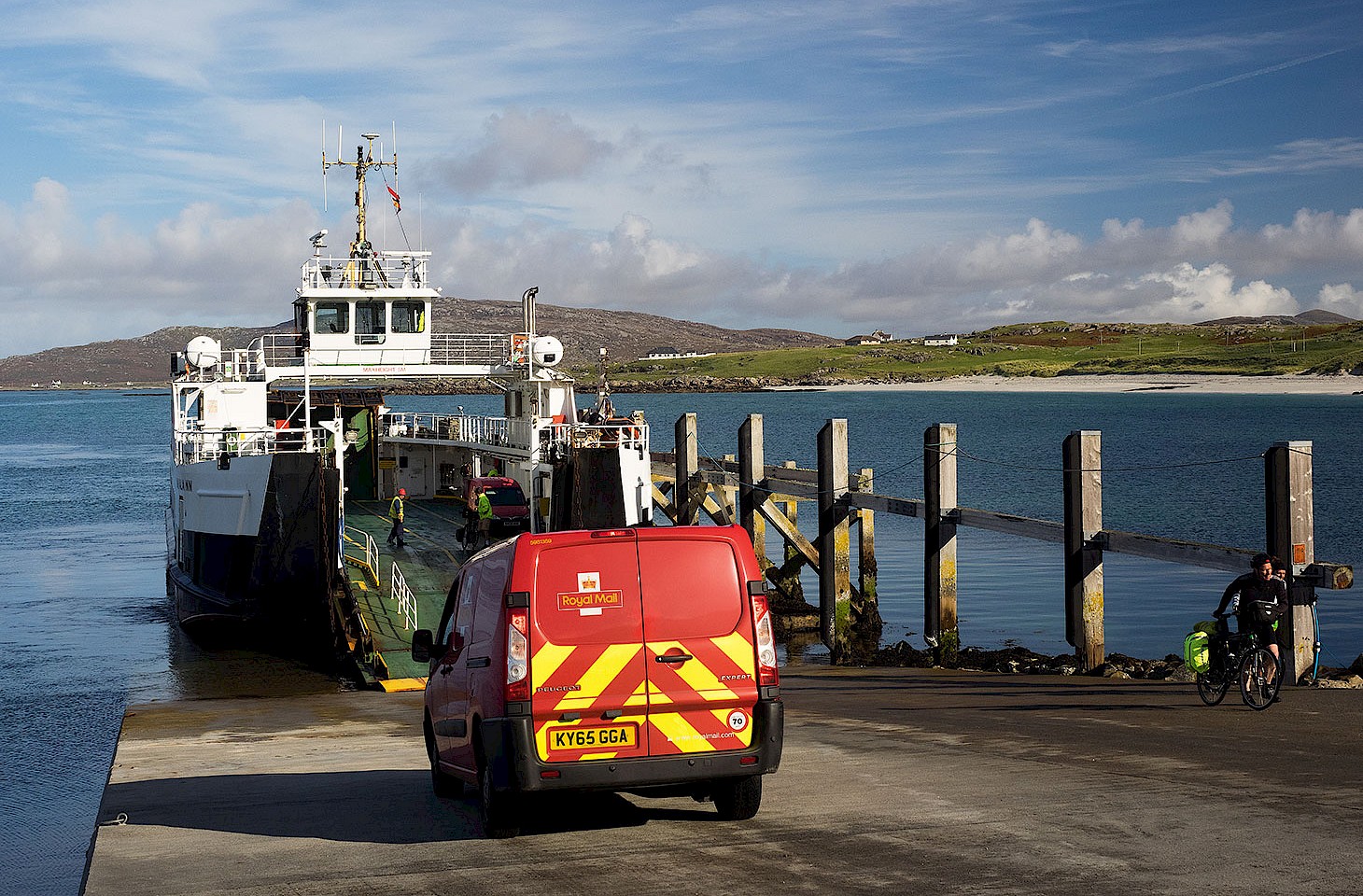Dear fellow travellers
We skirt the east side of Beinn Tangabhal, pausing by the memorial which recalls the men of Barra and Vatersay who died in the two world wars. Handsome marble tablets record a predictable litany of loss, not made any easier by the Gaelic lilt in the names of the dead: Eachann from the little community of Eoligarry on the northern rim of Barra; Rodaigh from Borve; two men sharing the name Niall from Bruernish. The memorial stands proud on the hillside; from here there is a glorious view east over Castlebay, the largest community on the island of Barra.
We watch the Caledonian MacBrayne steamer from Oban nudging up towards her berth in Castlebay, the vessel dwarfing Kisimul Castle which stands on a little island in the bay. "Aye, she may be called the Isle of Lewis," says a man by the war memorial, "but now she's our ship." From this past spring, Barra has benefitted from having its own dedicated Calmac vessel, which has led to a great improvement in shipping links with the mainland. The islanders turn a blind eye to the fact the ship is named after a very different island at the northern end of the Outer Hebrides. Barra and Lewis are two worlds. Lewis is a land of dark peat and austere Presbyterian values. Barra and neighbouring Vatersay are Catholic and altogether more laid-back when it comes to worldly distractions.
It is time for us to move on. Now chasing the last of the day's sun, we make tracks for Vatersay - once a separate island, but since 1991 linked to Barra by a causeway. There was a time when cattle from Vatersay being taken to market had to swim across the bay to Barra; more than once the tide and waves claimed the lives of animals.
This is a part of Europe where life has never been easy. The vicissitudes of the herring trade, the short-lived boom in kelp (once much valued by the alkali industry), and avaricious (and often absentee) landowners have left a mark on Hebridean society. For the final decades of the 19th century, Vatersay was owned by Emily Gordon Cathcart, who presided over the island's affairs from the comfort of her Gothic mansion in Berkshire. In the more than half a century that Lady Cathcart owned vast tracks of land in the Hebrides, she visited the region just once. Cottars and fishermen lived in abject poverty, overburdened by rents imposed from afar.
Vatersay is interesting in many ways. It was the setting in 1906 for a progressive social movement as impoverished cottars resisted eviction by Lady Cathcart. The Vatersay Raiders constructed simple huts and planted potatoes on her land. Their impudence was rewarded by a trip to Edinburgh in June 1908 where they were convicted and imprisoned for a few weeks. But the Vatersay case captured wider public attention, and highlighted the need for land reform. Within a year, the government had purchased the entire island of Vatersay from the Cathcart family. Vatersay was divided into 58 crofts, some of which are still in use today.
The islands to the south of Vatersay are all now uninhabited. Sandray, Pabbay, Mingulay and Berneray all have traces of former settlement. Some of those who once lived on those southernmost isles moved to Vatersay, which can now claim the distinction of being the southernmost permanently inhabited island in the Outer Hebrides. Head south from Vatersay and the first human settlements you'll encounter are just over 100 miles away on the Inishowen peninsula in Donegal. But Vatersay can claim another geographical record. It is also the most westerly permanently inhabited place of Scotland. This position was once held by St Kilda, but that island was evacuated in 1930, and the subsequent military base there has never had any permanent residents. The westernmost habitation on Vatersay is a sturdy cottage overlooking the bay at Caolas. It is in the process of being refurbished. Whether the owners or residents have ever realised their cardinal asset we do not know.
Vatersay is a place on the very edge of Scotland, the very edge of Europe. A simple display in the island's Catholic church records the temerity and zeal of the Vatersay Raiders. It's a nice reminder that the ripples of social change do not always spread from metropolitan hubs. Events in Vatersay in the early years of the last century shook Edwardian Britain and helped promote more enlightened attitudes to land reform.
Nicky Gardner and Susanne Kries
(editors, hidden europe magazine)



